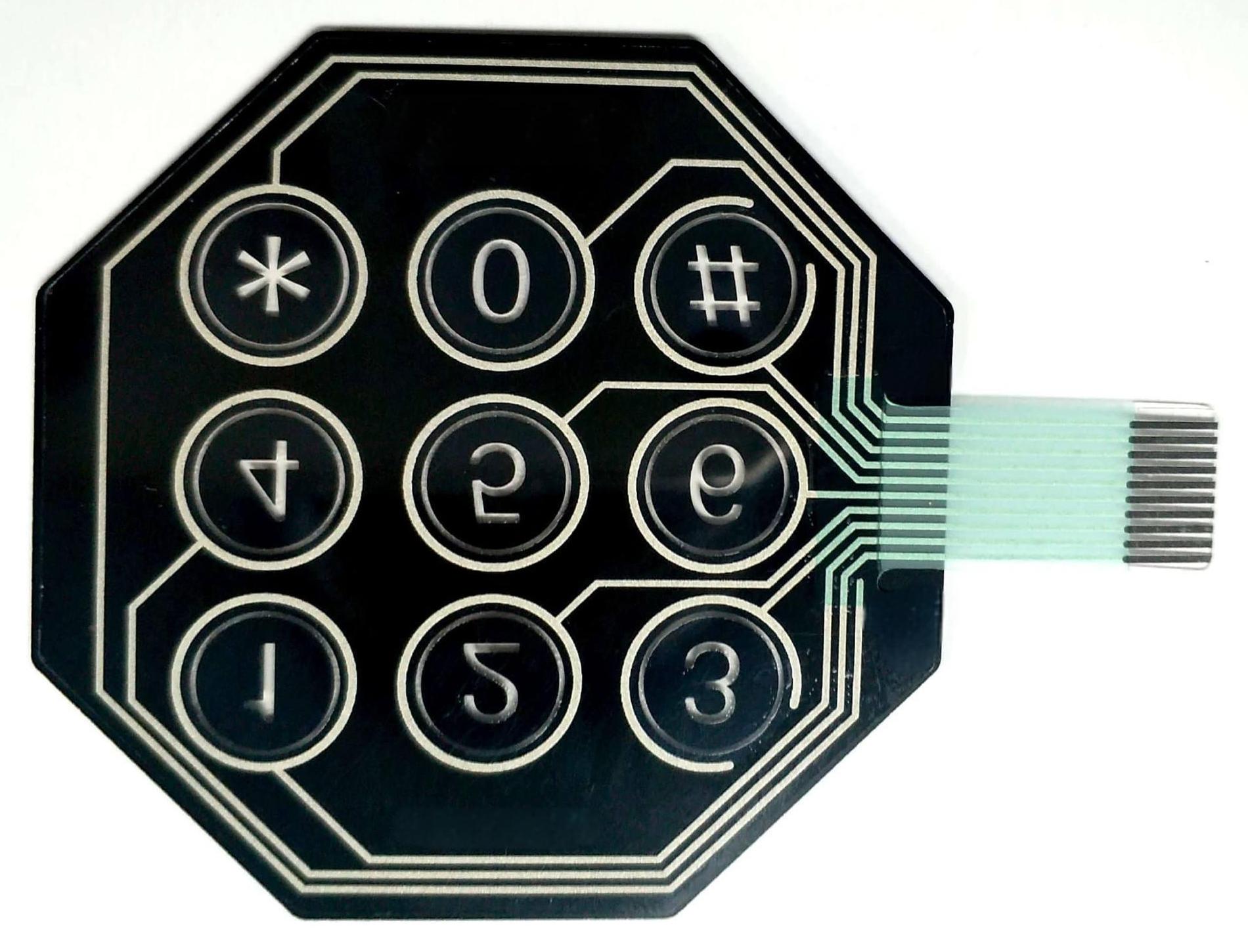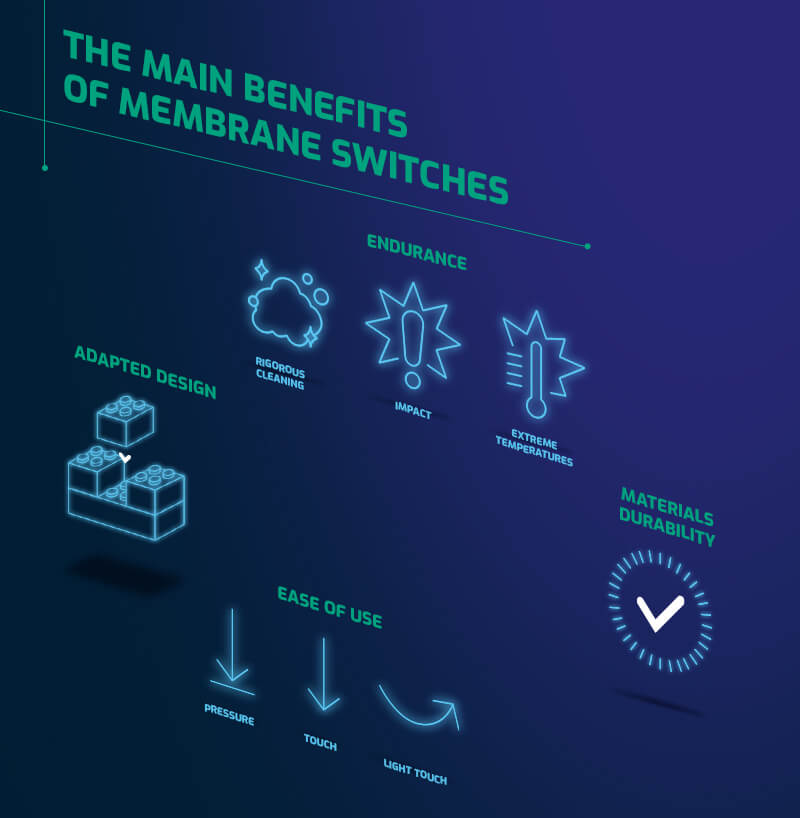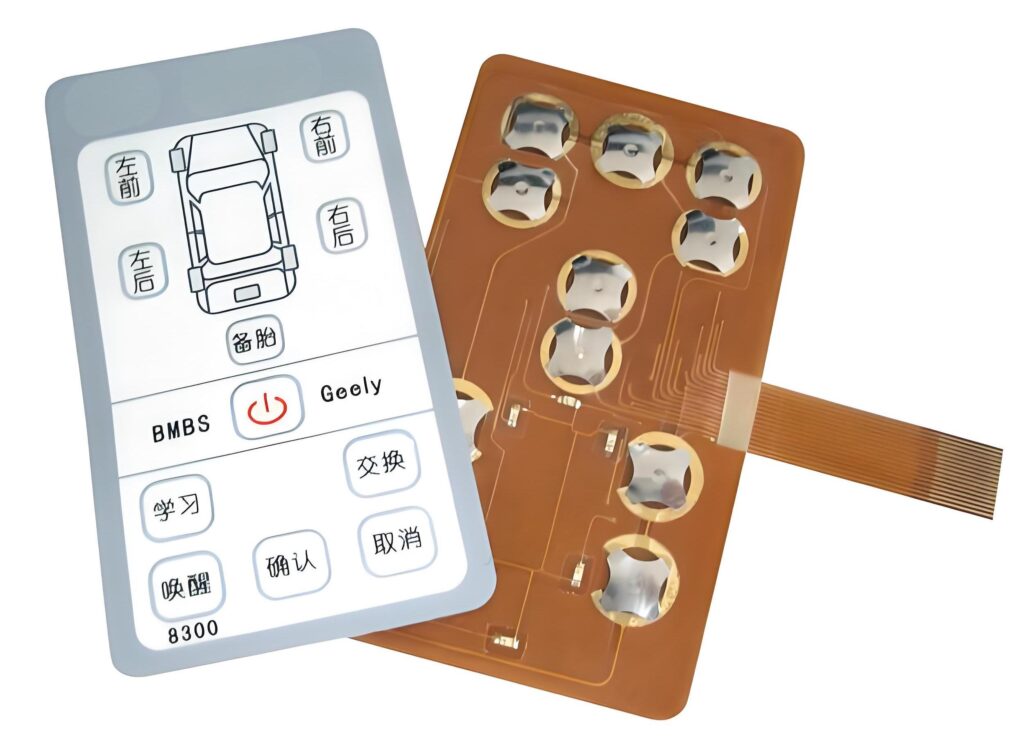Membrane switch durability: How it holds up under tough conditions
The Manufacturing Refine Behind Membrane Switch Over: What You Need to Know
The manufacturing procedure behind membrane changes combines careful style, material option, and high quality control. It starts with comprehending the intricacies of membrane layer switch style and progresses with various phases, consisting of material selections and printing techniques. Each stage plays a vital duty in making sure functionality and longevity. However, the intricacies of layer construction and the extensive screening standards might disclose insights that are not quickly obvious. What lies beyond these fundamental components?
Comprehending Membrane Layer Switch Over Design
Membrane buttons might show up simple at first glance, their style includes complex factors to consider that assure functionality and resilience. The style process begins with a complete understanding of customer needs, including the interface's intended application and environmental factors. Ergonomics is a crucial element, as the layout must facilitate ease of use while ensuring that tactile responses fulfills customer expectations.Moreover, the layering of elements, such as graphic overlays, adhesive layers, and conductive traces, should be exactly engineered. membrane switch. This split arrangement not just influences the switch's responsiveness but additionally influences its durability. Interest is given to the sealing strategies utilized to safeguard against dampness and dirt, which might compromise efficiency. In addition, style considerations reach aesthetic appeals, where shade systems and visual clarity boost individual experience. Ultimately, the layout of membrane layer changes balances functionality, customer experience, and toughness, guaranteeing that they fulfill the demands of numerous applications successfully
Materials Made Use Of in Membrane Switch Production
When selecting products for membrane button manufacturing, it is necessary to consider both performance and toughness. The main products include polyester and polycarbonate movies, which provide adaptability and strength. These movies are typically covered with adhesive to assure proper bonding to substratums. Conductive inks, typically made up of silver or carbon, are crucial for producing electric connections within the button, permitting reliable operation.Additionally, a safety layer, such as a difficult layer, is often used to improve scrape resistance and longevity. The option of backing material, such as acrylic or foam, can substantially impact the switch's responsive feel and total user experience. Different ecological variables, including temperature level and humidity, ought to assist product option to guarantee peak performance in particular applications. Inevitably, the right mix of products adds to the membrane layer button's capability and lifespan, making informed choices important for makers.
The Printing Refine: Creating Video and Text
The printing procedure in membrane layer button production plays a considerable function in producing premium graphics and text. Different graphic style methods are utilized to guarantee visual charm and performance, while cautious ink choice techniques are vital for toughness and efficiency. Comprehending these aspects is basic for attaining finest results in membrane switch layout.
Graphic Layout Techniques
Graphic design techniques play a crucial duty in the printing process of membrane layer buttons, as they define just how graphics and text will eventually show up on the last item. Effective visuals style involves the strategic usage of colors, typefaces, and designs to boost readability and aesthetic appeal. Designers usually utilize vector graphics for scalability, making certain that pictures remain sharp at various sizes. In addition, focus to comparison and alignment is essential, as it influences individual communication and aesthetic top quality. The consolidation of branding components, such as logo designs, have to be handled with treatment to maintain brand honesty. Overall, thoughtful graphic layout techniques add considerably to the performance and good looks of membrane switches, affecting customer experience and product performance.
Ink Selection Methods
Choosing the ideal ink is important for accomplishing the wanted aesthetic quality and sturdiness in membrane layer button production. Various ink types are used, consisting of solvent-based, water-based, and UV-curable inks. Each kind supplies distinct qualities, such as resistance, adhesion, and flexibility to environmental elements. Solvent-based inks are typically preferred for their toughness and vivid shades, while water-based inks are extra eco-friendly yet may have limitations in attachment. UV-curable inks give rapid curing and durable efficiency. In addition, color matching techniques assure that the picked inks straighten with layout specs. Eventually, the option of ink have to take into consideration aspects such as application technique, substrate compatibility, and end-use requirements to achieve premium cause membrane layer switch graphics and message.
Layer Building And Construction and Setting Up

Material Selection Refine
A careful selection of materials is vital in the production procedure of membrane switches, as it directly influences functionality and sturdiness. The main materials utilized consist of polyester, polycarbonate, and different conductive inks. Polyester is commonly favored for its outstanding resistance to chemicals and abrasion, making it appropriate for extreme atmospheres. Polycarbonate, on the other hand, offers remarkable clearness and effect resistance, which is useful for applications calling for visibility and robustness. Conductive inks, typically composed of silver or carbon, are essential for developing trusted electric paths. Furthermore, the option of sticky materials impacts the overall honesty of the button - membrane switch. Examining aspects such as environmental exposure, responsive comments, and aesthetic needs overviews makers in choosing the very best products for their details applications
Layer Bond Techniques
Sticking layers in membrane layer switch construction is a vital procedure that ensures functionality and long life. Different adhesion strategies are utilized to secure excellent bonding between layers, which normally consist of using adhesives, warm, and pressure. Pressure-sensitive adhesives (PSAs) are generally used for their ease of application and instant bonding capacities. Furthermore, thermal bonding techniques can be used, where heat is made use of to activate glue residential properties, securing a solid bond. The choice of adhesion approach mostly relies on the materials included and the specific application demands of the membrane layer switch. Correct alignment and consistent application of adhesives are necessary to prevent problems, safeguarding the switch operates properly throughout its intended life expectancy.
Top Quality Control Steps
Assuring quality assurance throughout the layer construction and assembly of membrane layer buttons is essential for preserving efficiency and integrity. This process usually involves a number of essential measures, including complete examinations at each stage of production. Makers make use of innovative testing techniques, such as peel tests and bond analyses, to validate the honesty of layer bonds. Additionally, visual evaluations are carried out to determine any kind of issues in printing or product inconsistencies. Environmental conditions, such as temperature and humidity, are carefully monitored to guarantee perfect curing and bond. Regular calibration of devices aids preserve accurate manufacturing standards. By membrane switch implementing these quality control measures, suppliers can substantially lower the threat of product failing, ensuring that the final membrane switches over satisfy the needed specifications and customer assumptions.
Checking and Quality Assurance Measures

Developments in Membrane Layer Switch Over Modern Technology
As improvements in modern technology remain to develop, membrane buttons are taking advantage of innovative growths that improve their functionality and customer experience. One noteworthy innovation is the assimilation of capacitive touch modern technology, which permits more receptive and user-friendly interface. This shift not just enhances visual appeals yet likewise lowers mechanical damage, prolonging the life-span of the switches.Additionally, developments in visuals overlay materials have actually led to boosted resilience and resistance to ecological factors such as wetness and UV light. These products currently use enhanced clearness and illumination, further raising the aesthetic appeal.Furthermore, the incorporation of clever technology is transforming membrane layer switches over into interactive control panels, allowing connection with IoT devices. This connectivity cultivates a smooth user experience, paving the means for applications in various industries, from health care to customer electronic devices. Jointly, these innovations placement membrane switches as crucial parts in modern gadget style.
Often Asked Inquiries
How much time Does the Membrane Change Production Refine Take?
The period of the membrane layer button production procedure can vary considerably. Aspects such as intricacy, products used, and these details production volume influence timelines, with common production ranging from a few days to a number of weeks for completion.
What Are the Typical Applications for Membrane Switches?
Membrane switches are typically used in different markets, including automobile controls, home appliances, medical devices, and customer electronic devices (membrane switch). Their convenience and durability make them perfect for applications requiring user-friendly user interfaces and trusted efficiency in varied atmospheres
Can Membrane Switches Be Custom-made for Details Demands?

What Is the Life expectancy of a Regular Membrane Switch?
The life expectancy of a regular membrane layer button varies, but typically, it ranges from 1 to 5 million cycles. Aspects such as use, setting, and worldly top quality substantially affect sturdiness and total efficiency over time.

Are Membrane Layer Changes Eco-friendly?
The environmental friendliness of membrane layer switches over differs. Some materials used may not be recyclable, while others can be eco-friendly. The overall impact relies on making methods and materials, requiring cautious consideration throughout choice and disposal. The manufacturing procedure behind membrane layer switches combines careful layout, product choice, and quality control. It starts with comprehending the intricacies of membrane layer switch design and proceeds with various phases, including product selections and printing techniques. When choosing products for membrane layer switch production, it is crucial to ponder both performance and toughness. why not find out more A mindful option of products is essential in the production procedure of membrane buttons, as it directly affects performance and durability. The selection of adhesion approach mostly depends on the products involved and the details application requirements of the membrane button.